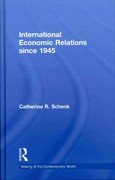Answer all the questions below
The following is an extract from a life table with a select period of 1 year. Age x 1 ager + 1 55 90,636 90,032 56 56 89,739 89,132 57 88,151 58 87,094 59 85,874 60 84,586 61 Evaluate dsea and a(56]:5 at 5 %% per annum interest. 2 Given that ar = 20, dram = 18 and aren = 8, find the values of aEr and arm. 3 (i) Write down an expression for a, in terms of v, Pr, and ar+1. (ii ) On a certain select mortality table the select period is one year. Express a( , in terms of v, P(x] and ar+1. Given that q(x] = .6qr and that at 42% pa. interest as = 15.719 and 046 = 15.509, find the value of apas] (at the same rate of interest). 4 Using the A1967-70 table with 4% p.a. interest find the values of "(40]:301. (39)+1:301: @40:301. (Ta)40: 5|@(40]:251 51(Ta)40:251 5 (i) Find the present value of a deferred annuity of f1000 p.a. to a man aged 40. Payments commence on his 60th birthday, if he is then alive, and continue thereafter annually for life. Basis: A1967-70 ultimate mortality, 4 % p.a. interest. (ii) As above, but select mortality (at entry.) (iii) As above, but A1967-70 ultimate mortality to exact age 60 and a(55) males ultimate mortality above exact age 60. 6 According to a certain mortality table, which has a select period of 1 year and is such that 4x] = 0.6qr for each x, azo at 10% interest = 5.641, and, an at 10% interest = 5.449. Find opp at 10% interest.2.1 A mortality table has a select period of three years. (i) Find expressions in terms of the life table functions + and ly for (a) 950] (b) 2P[50] (c) 2 9150] (d) 2 39[50]+1 (ii) Calculate ap53 given that: 9[50] = 0.01601, 24(50] = 0.96411, 2 9[50] = 0.02410, = 0.09272 2.2 In its premium rate basis, an office assumes a 3-year select period. Functions on this table are indicated by an asterisk. The table is such that: 41+7] = 9(x+3]+1 = 9(x]+2 = 93+1 and ultimate mortality follows A1967-70 ultimate. Assuming further that ($ = , on A1967-70 ultimate, calculate jas + for t =0, 1 and 2. 2.3 A certain life table has a select period of 1 year. At each integer age x , the select rate mortality is 50% of the ultimate rate. Calculate ejo , given that eco = 17.5424 and 960 = 0.0142. 2.4 Explain briefly the concept of selection in relation to mortality tables. Define the term "select period" and, using the A1967-70 table as an example, explain how a select table differs in construction from an aggregate table such as English Life Table No. 12 - Males








